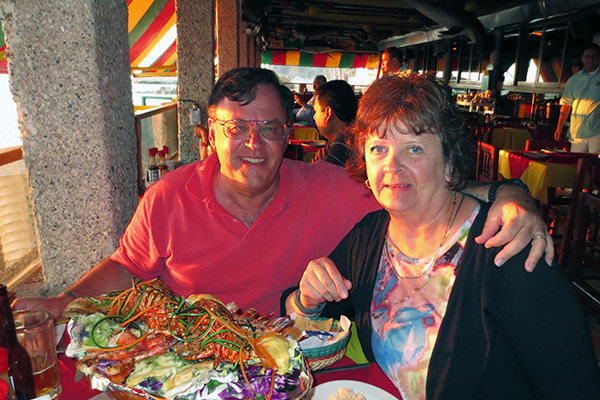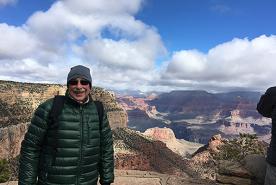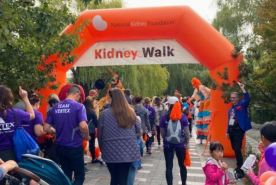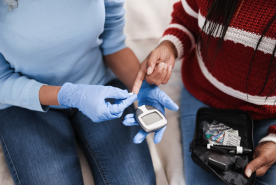Diseases and conditions Organ and tissue transplantation and donation Health systems, social systems, and environmental factors Kidney diseases and conditions Organ donation Healthcare system navigation and patient advocacy Kidney failure Patient advocacy
October 01, 2018
By talking about her need for a kidney, Anne Bina created a ripple effect that benefited many other patients.
By Tate Gunnerson
When Anne Bina found out that her kidneys were failing three decades after a childhood strep infection had weakened them, her first instinct was to keep it to herself. Fortunately, the 68-year-old comes from a proactive family who spread the word far and wide, ultimately urging her to speak at that year’s reunion. “That’s when I realized that I could talk about it,” she said. “It’s your life, and you do what you have to do.”
Anne, whose husband Bob is a retired Air Force officer, soon shared her story with the officer’s wives club and at squadron meetings. Then she spoke at her church. And when her boss asked her to speak at a large quarterly staff meeting, she jumped at the chance. Emotionally moved by her story, many people told Anne that they planned to sign up to become organ donors. “It was overwhelming,” Anne said.
Some people went a step further and got tested to see if their kidney would be a match for Anne. Although none of them were compatible, several of them went on to become living donors for others in need. “That was pretty emotional for me,” Anne said. “It still gives me goosebumps thinking about it.”
On a chilly October morning in 1999, at 2:30 a.m., Anne and Bob’s phone jarred them from sleep. A sixteen-year-old boy had been killed in a car accident and his parents had kindly decided to donate his organs. His kidneys were a good match for Anne, sharing four of the six tissue markers. Fortunately, the surgery was a resounding success and the kidney continues to function well after nearly two decades. In fact, Anne has never had a single rejection episode.
Although Anne didn’t actually find an organ by speaking out, she knows many people who fared better, some employing rather unconventional methods. One man had a t-shirt printed that advertised his need for a kidney along with his blood type and wore it during a family trip to Disney World. Another woman put a large sign up in her front yard. Both found donors.
“Don’t be afraid to talk with people and share your story, because you never know where help is going to come from,” Anne said. “People are more charitable then you realize.”
Since her transplant, the retired social services administrator has continued to speak out. She was a public speaker for the Wisconsin Donor Network, sharing her story with thousands of high school students, and she also volunteers as a mentor with the National Kidney Foundation’s NKF Peers program. Recently, she became an ambassador for NKF’s Kidney Transplant online community where people can ask questions, connect with others, enroll in programs and more.
Anne said that she will continue to tell her story and she encourages other people to do the same, not only if they need a donor but also for ongoing support and encouragement. Some people with kidney disease are terrified that they won’t be able to live a good life, Anne said, but she knows better.
“Less than a year after my transplant I was hiking in Glacier National Park,” Anne said, noting that she regularly spends time in the mountains near her home in Casper, Wyoming, as well as trips to Europe, the Caribbean and Mexico. “Kidney disease is a new journey and there will be bumps in the road,” she said, “but you can get past them and live a good life.”

















